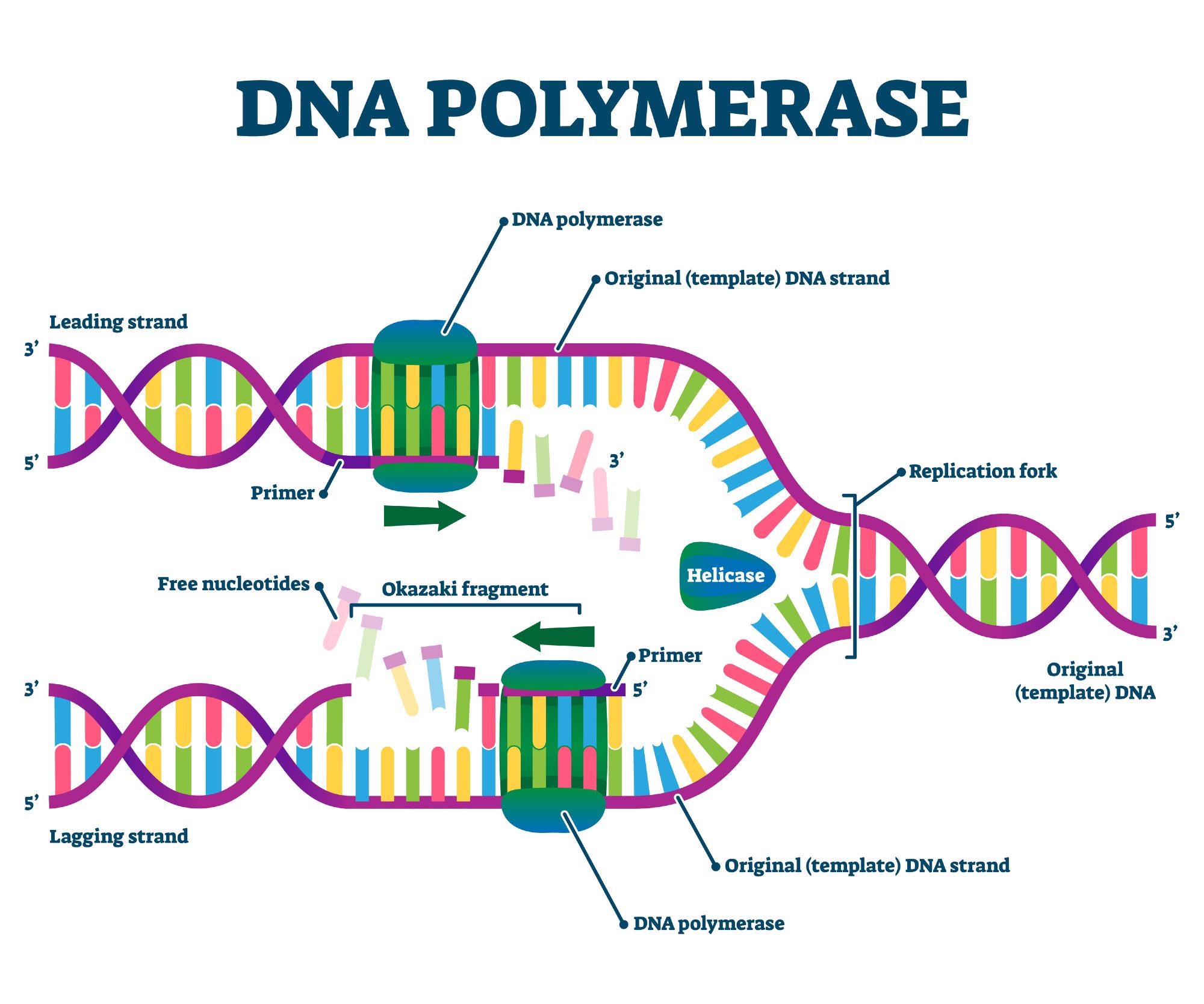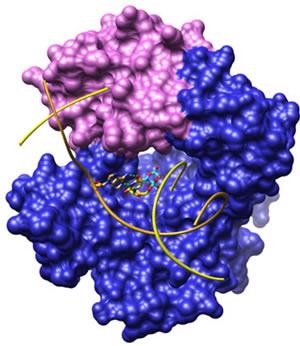DNA polymerases are enzymes that create DNA molecules by assembling nucleotides, the building blocks of DNA. These enzymes are essential to DNA replication and usually work in pairs to create two identical DNA strands from one original DNA molecule. During this process, DNA polymerase “reads” the existing DNA strands to create two new strands that match the existing ones.
 DNA Polymerase enzyme syntheses labeled educational vector illustration. Image Credit: VectorMine / Shutterstock
DNA Polymerase enzyme syntheses labeled educational vector illustration. Image Credit: VectorMine / Shutterstock
Every time a cell divides, DNA polymerase is required to help duplicate the cell’s DNA so that a copy of the original DNA molecule can be passed to each daughter cell. In this way, genetic information is transmitted from generation to generation.
Before replication occurs, an enzyme called helicase unwinds the DNA molecule from its tightly woven form. This opens up or “unzips” the double-stranded DNA to give two single strands of DNA that can be used as templates for replication.
DNA polymerase adds new free nucleotides to the 3’ end of the newly-forming strand, elongating it in a 5’ to 3’ direction. However, DNA polymerase cannot begin forming this new chain on its own and can only add nucleotides to a pre-existing 3'-OH group. A primer is therefore needed, at which nucleotides can be added. Primers are usually composed of RNA and DNA bases, and the first two bases are always RNA. These primers are made by another enzyme called primase.
Although the function of DNA polymerase is highly accurate, a mistake is made for about one in every billion base pairs copied. The DNA is therefore “proofread” by DNA polymerase after it has been copied so that misplaced base pairs can be corrected. This preserves the integrity of the original DNA strand that is passed onto the daughter cells.

A surface representation of human DNA polymerase β (Pol β), a central enzyme in the base excision repair (BER) pathway. Image Credit: niehs.nih.gov
Structure of DNA polymerase
The structure of DNA polymerase is highly conserved, meaning their catalytic subunits vary very little from one species to another, irrespective of how their domains are structured. This highly conserved structure usually indicates that the cellular functions they perform are crucial and irreplaceable and therefore require rigid maintenance to ensure their evolutionary advantage.
Further Reading